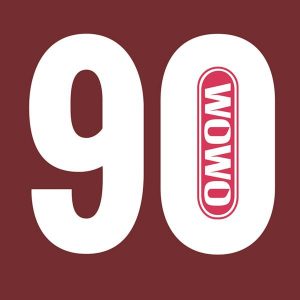A couple of tidbits of information that applies to the listeners of my radio station, WOWO, in Fort Wayne, Indiana.
For the past 20 years WOWO has been a news/talk radio station, (out of 90+ years on the air.)
Last month we received results from the rating service we subscribe to and again WOWO dominates with one of the largest audiences in our city. Even more impressive was the number of adults who listen.
I like to call them grown ups because once you reach a certain age you start doing grown up things like buy a house, start having kids, and buying important stuff. There’s lot’s of important stuff to buy once you are a grown up.
One tidbit of information has to do with the format of WOWO, News/Talk. 2016 was a huge year for political news with the election, and now as we move through the first couple of years of the Trump adminstration, there is no slowing down in sight. Nationally the News/Talk radio format was the most listened to in 2016 and the experts predict it will continue.
While it’s nice to have some industry insiders proclaim that, I knew that and you probably did too if you gave it a couple moments thought.
The other tidbit of information I have gathered merges two sources. When I dig into the radio rating information specifically for WOWO, I continue to see a huge number of listeners who are around the Baby Boomer generation.
To give you an idea of what Baby Boomers look like: Michelle Obama is a “young” Boomer, born in 1964 and Hillary Clinton at age 69 is at the other end of the Boomer generation.
Mediapost published this insight on Boomers which applies to most WOWO radio listeners:
What We’ve Learned About Marketing To Baby Boomers by Jim Gilmartin
Our Understanding of the Baby Boomer Consumer
Mark Twain wrote, “The problem isn’t the things that we don’t know; it’s the things we ‘know’ that ain’t so.” His comment is simply a reflection of a common-sense reality. Today, marketing and selling draw on a lot of things “we ‘know’ that ain’t so.”
For instance: Marketers once “knew” (and many still do) that people 50 and older rarely change brands. Everybody “knew” that once consumers settled in on a brand or a company, they became more resistant to switching to another brand or business as they got older. Research shows that to be wrong. We also learned that consumer behavior is pertinent to the subtleties of marketing, advertising, and sales practices. Here is some of what we’ve learned.
1. As we age, our individualism increases
Baby Boomers are less subject to peer influence than are younger consumers.
Marketing Implication: Keeping up with the Joneses is not as important as it once was; thus, advertising that invokes social status benefits does not play as well in Baby Boomer markets as it does in younger ones. Largely freed from worrying about reactions of others, Baby Boomers tend toward greater practicality in buying decisions than younger consumers.
2. We develop an Increased demand for facts
Baby Boomers tend to be less responsive to sweeping claims in marketing messages as they age.
Marketing Implication: Hyperbole turns them off. If Baby Boomers are interested in considering a purchase, they want unadorned facts. Years of buying equip them with knowledge of what to look for and what information they need for an intelligent purchase. However, they often don’t get to the point of asking for facts until a product has emotionally intrigued them.
3. Our response to emotional stimuli increases
Baby Boomers tend to be quicker than younger consumers to reflect a lack of interest in or negative reaction to an offered product that doesn’t make an emotional connection.
Marketing Implication: Such “first impressions” are more likely to be permanent than among younger people, who are more apt to give a marketer a second chance. On the other hand, you can embed a positive first impression especially deep in the emotions of the Baby Boomer — so much so that he or she is often more disposed to be a loyal customer than the younger consumer.
4. We become less self-oriented, more altruistic
Baby Boomers tend to show increased response to marketing appeals reflecting altruistic values.
Marketing Implication: This tracks with shared middle-age shifts toward stronger spiritual values in which concern for others increases. As their altruistic motivations grow and become more powerful, narcissistic and materialistic values wane in influence. Marketers to Baby Boomers must rethink their traditional egocentric appeals in marketing communications.
5. As we age, we spend more time in making purchase decisions
People experience changes in their perceptions of time, and also the meaning and role of time in their lives as they grow older.
Marketing Implication: For example, Baby Boomers often ignore time-urgency strategies in marketing — such as: “Offer good until —,” “Only three left in stock.” Generally, “time is not of the essence” is a common attitude among Baby Boomers, especially those who have retired.
6. We often project what seems to be contradictory behavior
Sometimes we characterize Baby Boomers as selfish and selfless, penurious and profligate, spontaneous and deliberate, and so on. These different attributes lead some to describe Baby Boomers as contradictory — or at least, confusing in their behavior.
Marketing Implication: Baby Boomers are not different in their conduct; they are sensitive to the context in their behavior. For example, a Baby Boomer may use coupons in a grocery store, after which she drives off in a Mercedes.
This activity is not evidence of conflicting behavior, but an example of the rules of thriftiness applied to basics, and the rules of full value applied to discretionary expenditures. In the first case, the price is the common denominator in consumers’ interest, in the second, there is no common denominator because each person calculates the whole value in a unique manner.
Want to know more? Let’s talk.
